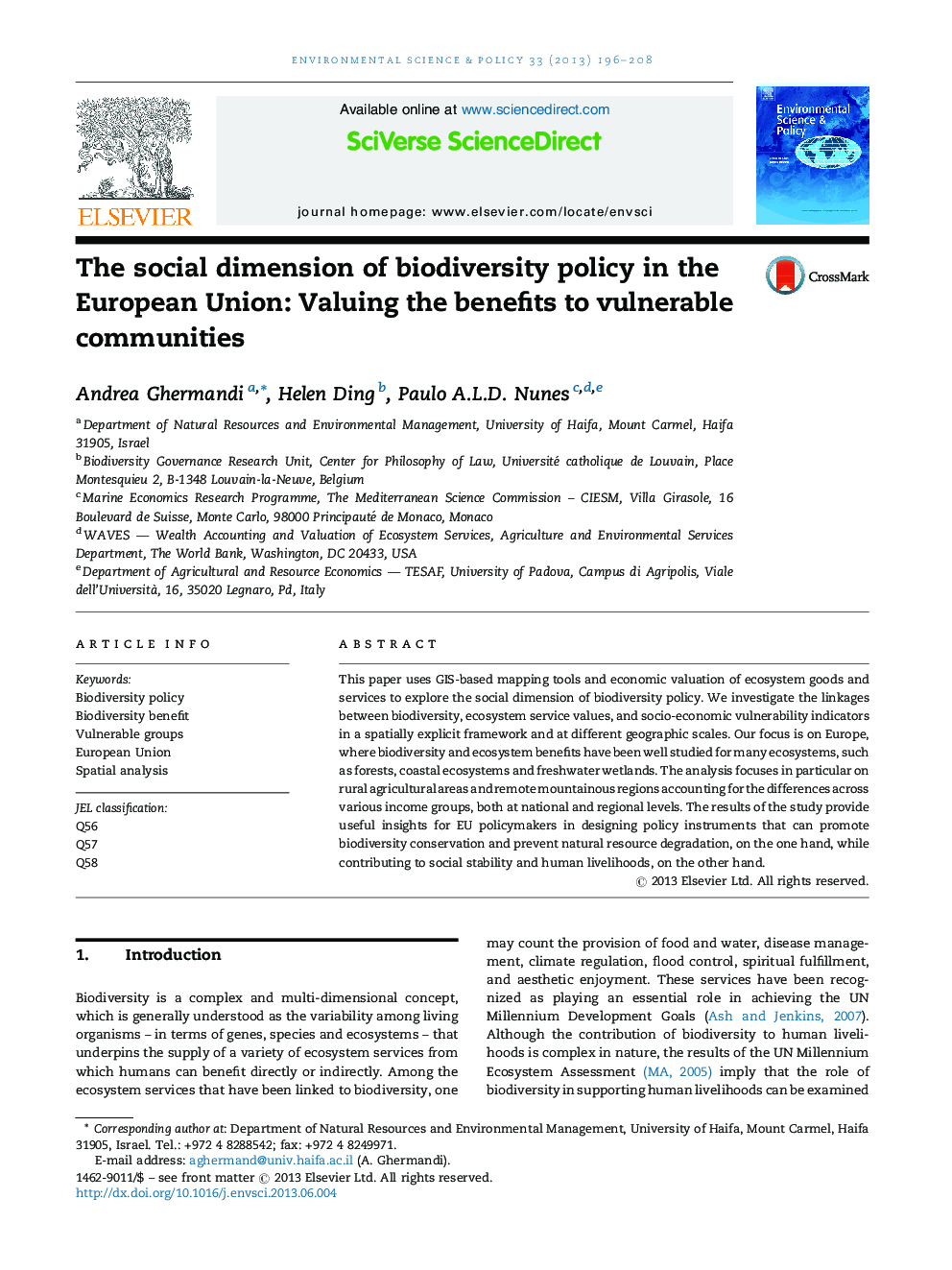| کد مقاله | کد نشریه | سال انتشار | مقاله انگلیسی | نسخه تمام متن |
|---|---|---|---|---|
| 1053654 | 1485073 | 2013 | 13 صفحه PDF | دانلود رایگان |

• We investigate the links between biodiversity, ecosystem service values, and socio-economic vulnerability.
• We use GIS to map biodiversity benefits and rural vulnerable groups over European regions.
• We explore income-related vulnerability and link to biodiversity in European countries.
• We investigate the dependency on biodiversity of rural agricultural and remote mountainous regions.
• The findings provide insights for EU policymakers in designing biodiversity policy instruments.
This paper uses GIS-based mapping tools and economic valuation of ecosystem goods and services to explore the social dimension of biodiversity policy. We investigate the linkages between biodiversity, ecosystem service values, and socio-economic vulnerability indicators in a spatially explicit framework and at different geographic scales. Our focus is on Europe, where biodiversity and ecosystem benefits have been well studied for many ecosystems, such as forests, coastal ecosystems and freshwater wetlands. The analysis focuses in particular on rural agricultural areas and remote mountainous regions accounting for the differences across various income groups, both at national and regional levels. The results of the study provide useful insights for EU policymakers in designing policy instruments that can promote biodiversity conservation and prevent natural resource degradation, on the one hand, while contributing to social stability and human livelihoods, on the other hand.
Journal: Environmental Science & Policy - Volume 33, November 2013, Pages 196–208